Investigation of the Dynamic Recrystallization of FeMnSiCrNi Shape Memory Alloy under Hot Compression Based on Cellular Automaton
Abstract
:1. Introduction
2. Materials and Methods
3. Fundamentals of CA modeling
3.1. Model of Dislocation Evolution
3.2. Model for Nucleation Rate
3.3. Model for CA
4. Results and Discussion
4.1. Flow Behavior of FeMnSiCrNi SMA
4.2. Microstructural Evolution of DRX
4.3. Prediction of Microstructures
4.4. Prediction of Flow Stress
4.5. Prediction of Dislocation Density
5. Conclusions
Author Contributions
Funding
Conflicts of Interest
References
- Yang, C.F.; Lin, H.C.; Lin, K.M.; Tsai, H.K. Effect of thermo-mechanical treatment on a Fe-30Mn-6Si shape memory alloy. Mater. Sci. Eng. A 2008, 497, 445–450. [Google Scholar] [CrossRef]
- Amini, R.; Shamsipoor, A.; Ghaffari, M.; Alizadeh, M.; Okyay, O.K. Phase transformation during mechano-synthesis of nanocrystalline/amorphous Fe-32Mn-6Si alloys. Mater. Charact. 2013, 84, 169–174. [Google Scholar] [CrossRef]
- Stanford, N.; Dunne, D.P. Effect of Si on the reversibility of stress-induced martensite in Fe-Mn-Si shape memory alloy. Acta Mater. 2010, 58, 6752–6762. [Google Scholar] [CrossRef]
- Caenegem, N.N.; Duprez, L.; Verbeken, K.; Segers, D.; Houbaert, Y. Stresses related to the shape memory effect in Fe-Mn-Si-based shape memory alloys. Mater. Sci. Eng. A 2008, 481, 183–189. [Google Scholar] [CrossRef]
- Stanford, N.; Dunne, D.P. Thermo-mechanical processing and the shape memory effect in an Fe-Mn-Si-based shape memory alloy. Mater. Sci. Eng. A 2006, 422, 352–359. [Google Scholar] [CrossRef]
- Shakoor, R.A.; Khalid, F.A. Thermomechanical behavior of Fe-Mn-Si-Cr-Ni shape memory alloys modified with samarium. Mater. Sci. Eng. A 2009, 499, 411–414. [Google Scholar] [CrossRef]
- Lin, H.C.; Wu, S.K.; Peng, Y.T.; Cheng, T.C.; Lin, K.M. Pseudoelasticity of thermo-mechanically treated Fe-Mn-Si-Cr-Ta alloys. J. Alloy Compd. 2013, 577, S338–S343. [Google Scholar]
- Stanford, N.; Dunne, D.P.; Li, H. Re-examination of effect of NbC precipitation on shape memory in Fe-Mn-Si-based alloys. Scr. Mater. 2008, 58, 583–586. [Google Scholar] [CrossRef]
- Wang, G.X.; Peng, H.B.; Sun, P.P.; Wang, S.L.; Wen, Y.H. Effect of titanium addition on shape memory effect and recovery stress of training-free cast Fe-Mn-Si-Cr-Ni shape memory alloys. Mater. Sci. Eng. A 2016, 657, 339–346. [Google Scholar] [CrossRef]
- Zhang, W.; Jiang, L.Z.; Li, N.; Wen, Y.H. Improvement of shape memory effect in an Fe-Mn-Si-Cr-Ni alloy fabricated by equal channel angular pressing. J. Mater. Process. Technol. 2008, 208, 130–134. [Google Scholar]
- Druker, A.V.; Baruj, A.; Isola, L.; Fuster, V.; Malarría, J.; Bolmaro, R. Gaining flexibility in the design of microstructure, texture and shape memory properties of an Fe-Mn-Si-Cr-Ni alloy processed by ECAE and annealing. Mater. Des. 2016, 107, 153–162. [Google Scholar] [CrossRef]
- Kwon, E.P.; Fujieda, S.; Shinoda, K.; Suzuki, S. Texture evolution and fcc/hcp transformation in Fe-Mn-Si-Cr-Ni alloys by tensile deformation. Mater. Sci. Eng. A 2010, 527, 6524–6532. [Google Scholar] [CrossRef]
- Jin, Z.Y.; Cui, Z.S. Investigation on dynamic recrystallization using a modified cellular automaton. Comput. Mater. Sci. 2012, 63, 249–255. [Google Scholar] [CrossRef]
- Timoshenkov, A.; Warczok, P.; Albu, M.; Klarner, J.; Kozeschnik, E.; Bureau, R.; Sommitsch, C. Modelling the dynamic recrystallization in C-Mn micro-alloyed steel during thermo-mechanical treatment using cellular automata. Comput. Mater. Sci. 2014, 94, 85–94. [Google Scholar] [CrossRef]
- Popova, E.; Staraselski, Y.; Brahme, A.; Mishra, R.K.; Inal, K. Coupled crystal plasticity-Probabilistic cellular automata approach to model dynamic recrystallization in magnesium alloys. Int. J. Plast. 2015, 66, 85–102. [Google Scholar] [CrossRef]
- Hallberg, H.; Wallin, M.; Ristinmaa, M. Simulation of discontinuous dynamic recrystallization in pure Cu using a probabilistic cellular automaton. Comput. Mater. Sci. 2010, 49, 25–34. [Google Scholar] [CrossRef] [Green Version]
- Chen, M.S.; Yuan, W.Q.; Lin, Y.C.; Li, H.B.; Zou, Z.H. Modeling and simulation of dynamic recrystallization behavior for 42CrMo steel by an extended cellular automaton method. Vacuum 2017, 146, 142–151. [Google Scholar] [CrossRef]
- Chen, F.; Qi, K.; Cui, Z.S.; Lai, X.M. Modeling the dynamic recrystallization in austenitic stainless steel using cellular automaton method. Comput. Mater. Sci. 2014, 83, 331–340. [Google Scholar] [CrossRef]
- Chen, M.S.; Yuan, W.Q.; Li, H.B.; Zou, Z.H. Modeling and simulation of dynamic recrystallization behaviors of magnesium alloy AZ31B using cellular automaton method. Comput. Mater. Sci. 2017, 136, 163–172. [Google Scholar] [CrossRef]
- Wang, L.X.; Fang, G.; Qian, L.G. Modeling of dynamic recrystallization of magnesium alloy using cellular automata considering initial topology of grains. Mater. Sci. Eng. A 2018, 711, 268–283. [Google Scholar] [CrossRef]
- Li, X.L.; Li, X.L.; Zhou, H.T.; Li, F.B.; Liu, Q. Simulation of dynamic recrystallization in AZ80 magnesium alloy using cellular automaton. Comput. Mater. Sci. 2017, 140, 95–104. [Google Scholar]
- Liu, Y.X.; Lin, Y.C.; Li, H.B.; Wen, D.X.; Chen, X.M.; Chen, M.S. Study of dynamic recrystallization in a Ni-based superalloy by experiments and cellular automaton model. Mater. Sci. Eng. A 2015, 626, 432–440. [Google Scholar] [CrossRef]
- Cao, Z.H.; Sun, Y.; Wan, Z.P.; Yang, W.H.; Ren, L.L.; Hu, L.X. Cellular automaton simulation of dynamic recrystallization behavior in V-10Cr-5Ti alloy under hot deformation conditions. Trans. Nonferrous Met. Soc. China 2019, 29, 98–111. [Google Scholar] [CrossRef]
- Ding, R.; Guo, Z.X. Microstructural modelling of dynamic recrystallisation using an extended cellular automaton approach. Comput. Mater. Sci. 2002, 23, 209–218. [Google Scholar] [CrossRef]
- Kugler, G.; Turk, R. Modeling the dynamic recrystallization under multi-stage hot deformation. Acta Mater. 2004, 52, 4659–4668. [Google Scholar] [CrossRef]
- Mecking, H.; Kocks, U.F. Kinetics of flow and strain-hardening. Acta Metall. 1981, 29, 1865–1875. [Google Scholar] [CrossRef]
- Ding, R.; Guo, Z.X. Coupled quantitative simulation of microstructural evolution and plastic flow during dynamic recrystallization. Acta Mater. 2001, 49, 3163–3175. [Google Scholar] [CrossRef]
- Mcqueen, H.J.; Ryan, N.D. Constitutive analysis in hot working. Mater. Sci. Eng. A 2002, 322, 43–63. [Google Scholar] [CrossRef]
- Derby, B. Dynamic recrystallisation: The steady state grain size. Scr. Metall. Mater. 1992, 27, 1581–1585. [Google Scholar] [CrossRef]
- Sandstorm, R.; Lagneborg, R. A model for hot working occurring by recrystallization. Acta Metall. 1975, 23, 387–398. [Google Scholar] [CrossRef]
- Yazdipour, N.; Davies, C.H.J.; Hodgson, P.D. Microstructural modeling of dynamic recrystallization using irregular cellular automata. Mater. Sci. 2008, 44, 566–577. [Google Scholar] [CrossRef]
- Chen, F.; Cui, Z.S.; Liu, J.; Chen, W.; Chen, S.J. Mesoscale simulation of the high-temperature austenitizing and dynamic recrystallization by coupling a cellular automaton with a topology deformation technique. Mater. Sci. Eng. A 2010, 527, 5539–5549. [Google Scholar] [CrossRef]
- Zhang, Y.Q.; Jiang, S.Y.; Liang, Y.L.; Hu, L. Simulation of dynamic recrystallization of NiTi shape memory alloy during hot compression deformation based on cellular automaton. Comput. Mater. Sci. 2013, 71, 124–134. [Google Scholar] [CrossRef]
- Straumal, B.B.; Polyakov, S.A.; Mittemeijer, E.J. Temperature inflfluence on the faceting of ∑3 and ∑9 grain boundaries in Cu. Acta Mater. 2006, 54, 167–172. [Google Scholar] [CrossRef]
- Straumal, B.B.; Kogtenkova, O.A.; Gornakova, A.S.; Sursaeva, V.G.; Baretzky, B. Review: Grain boundary faceting–roughening phenomena. J. Mater. Sci. 2016, 51, 382–404. [Google Scholar] [CrossRef]
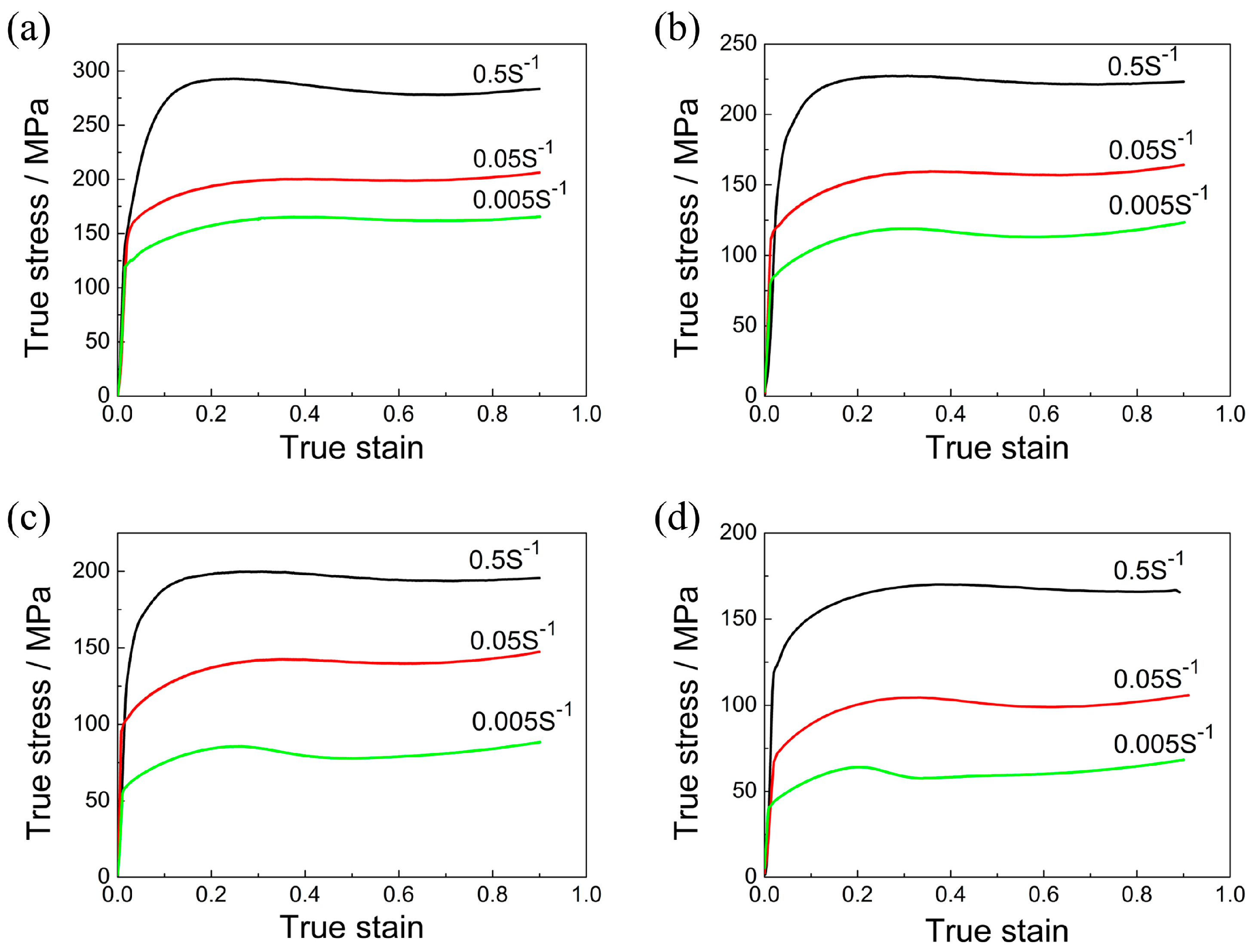
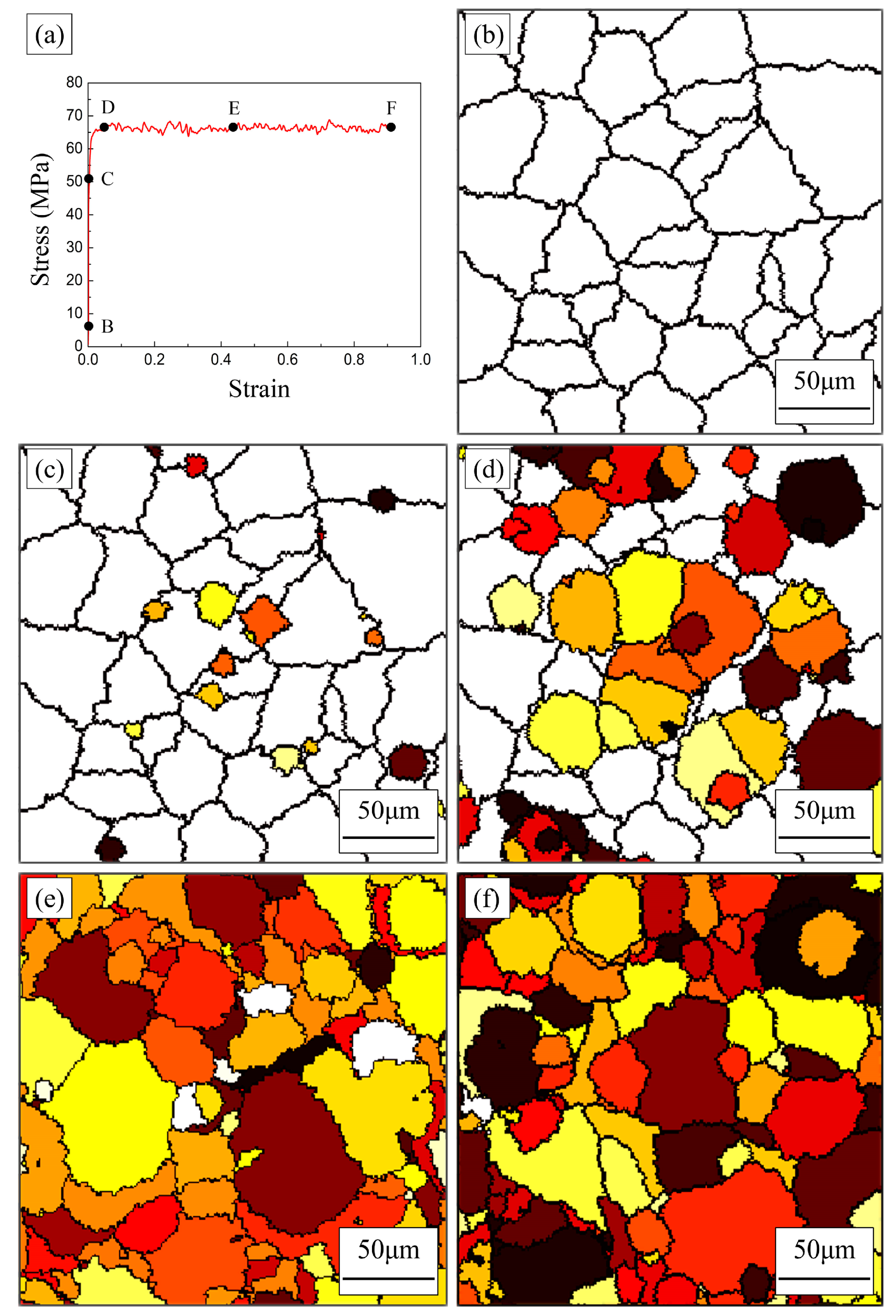
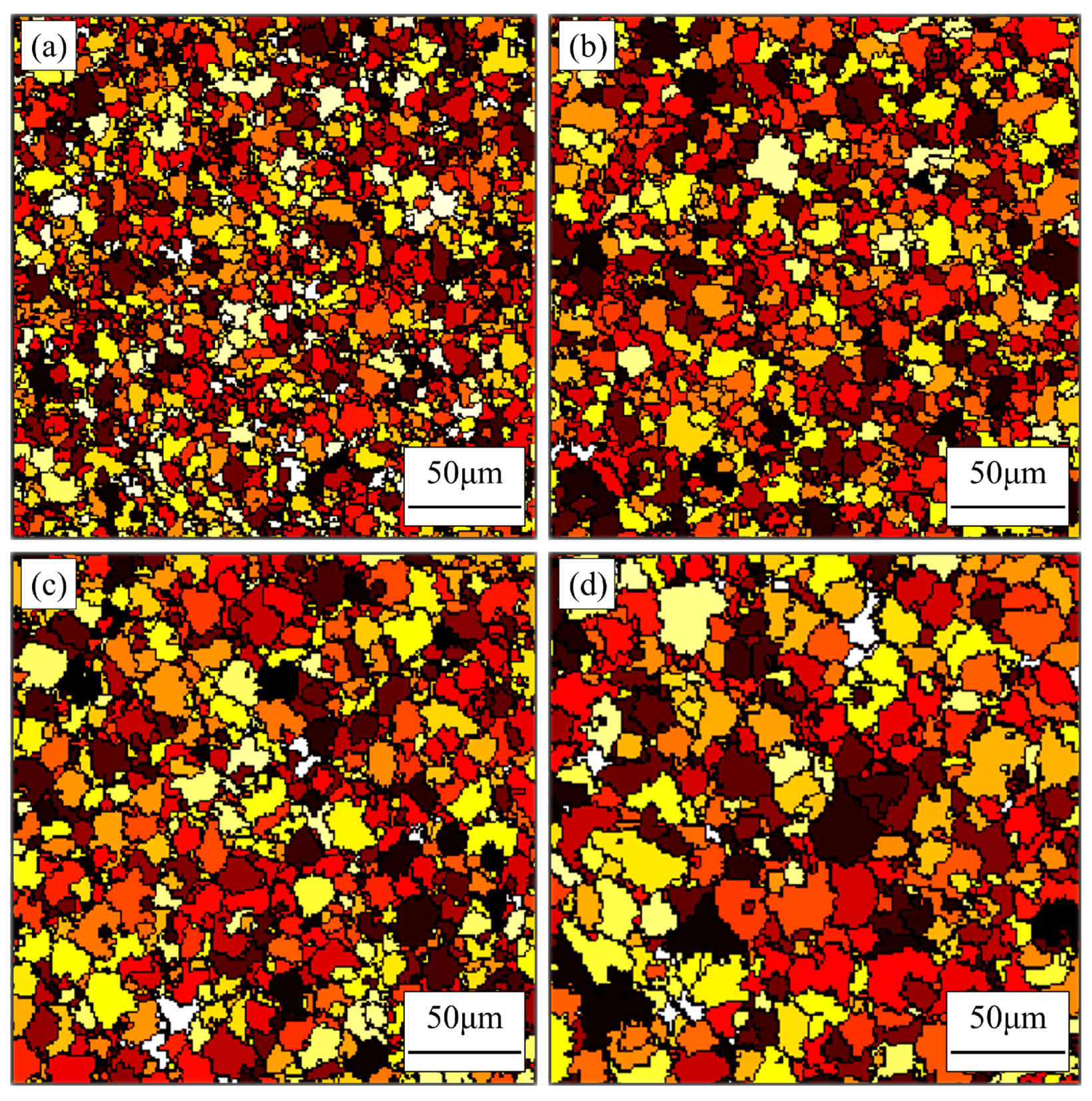
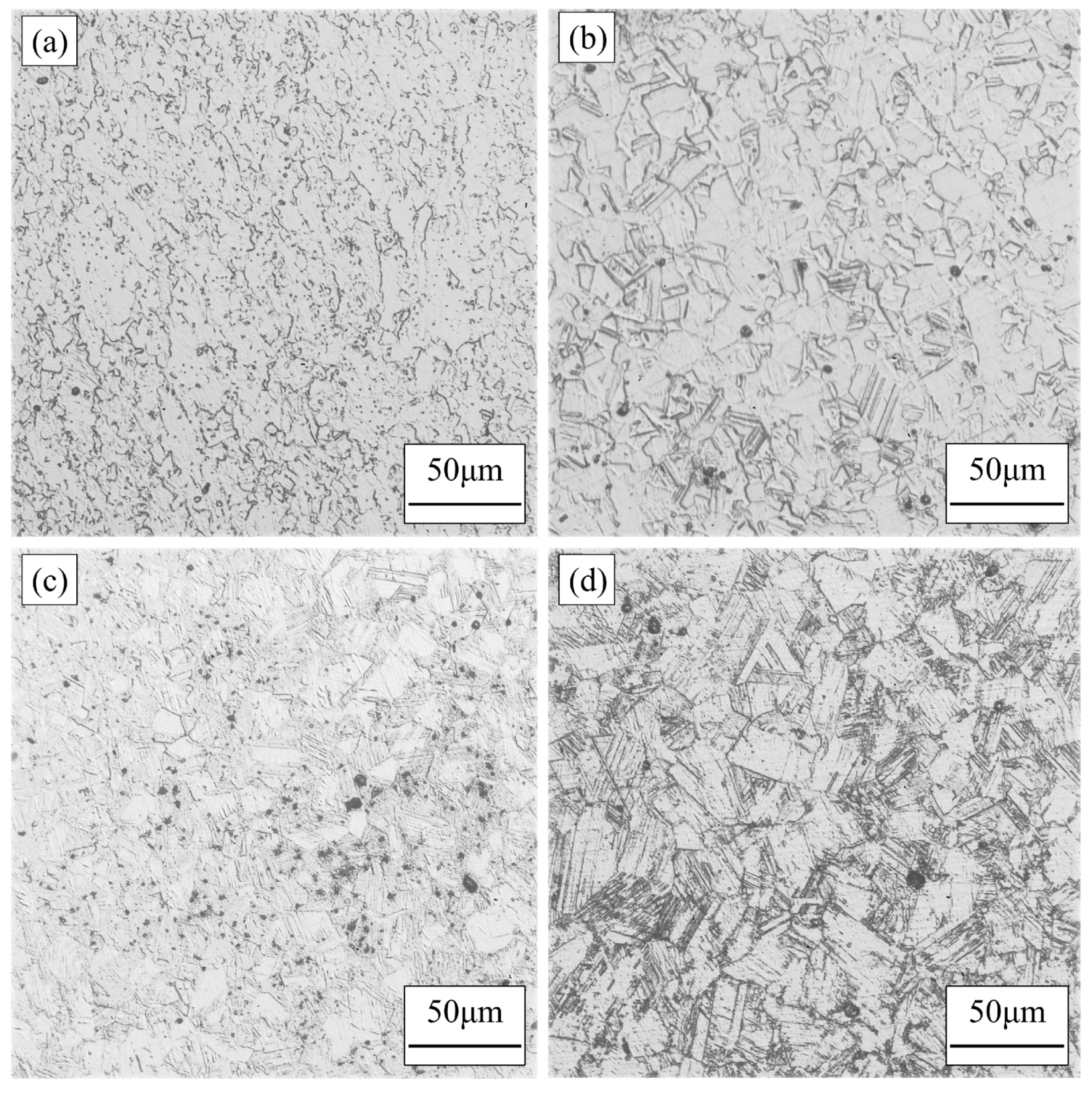
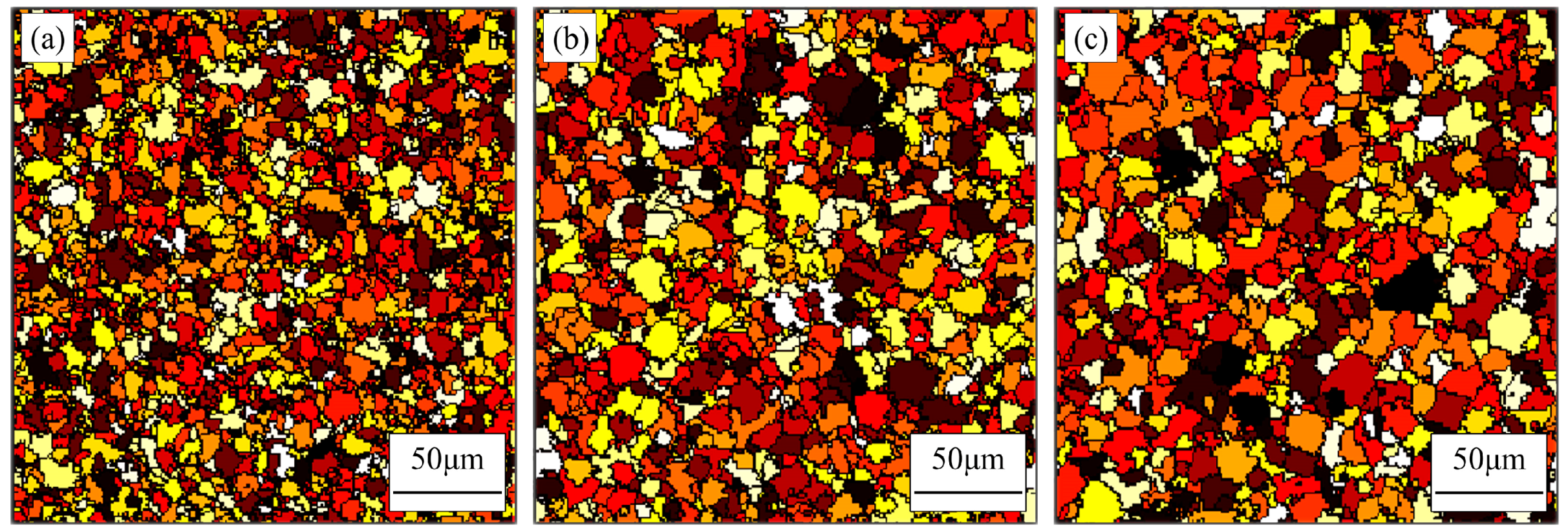
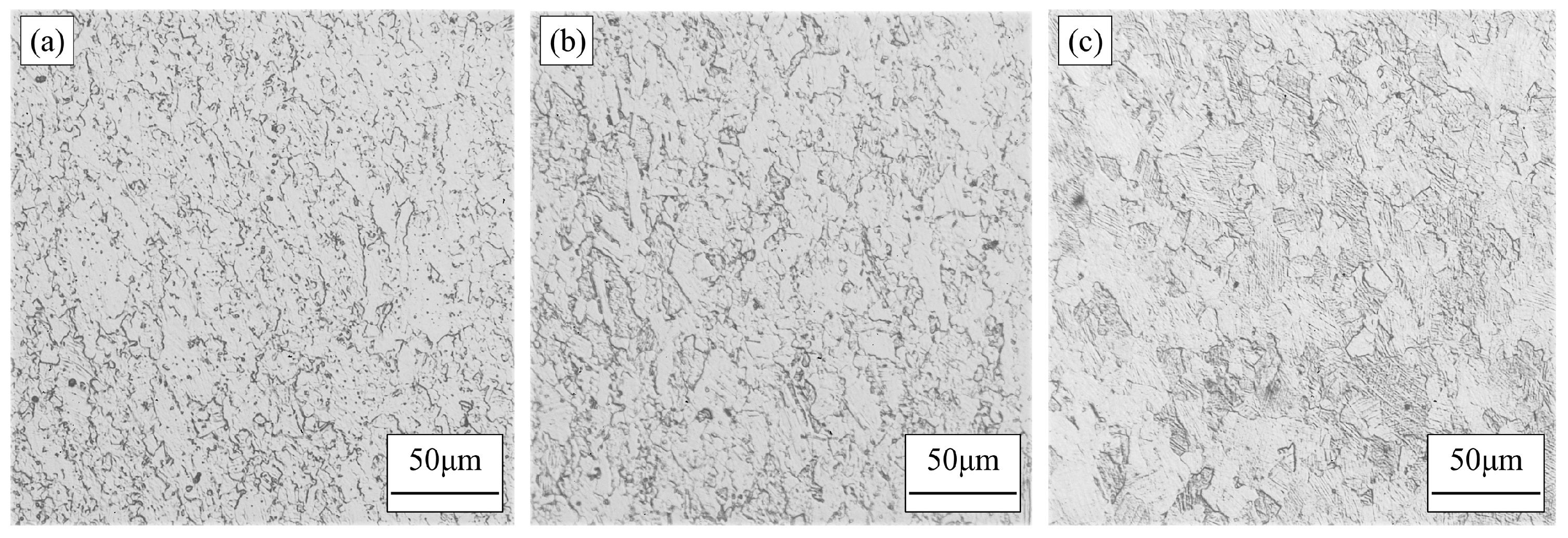
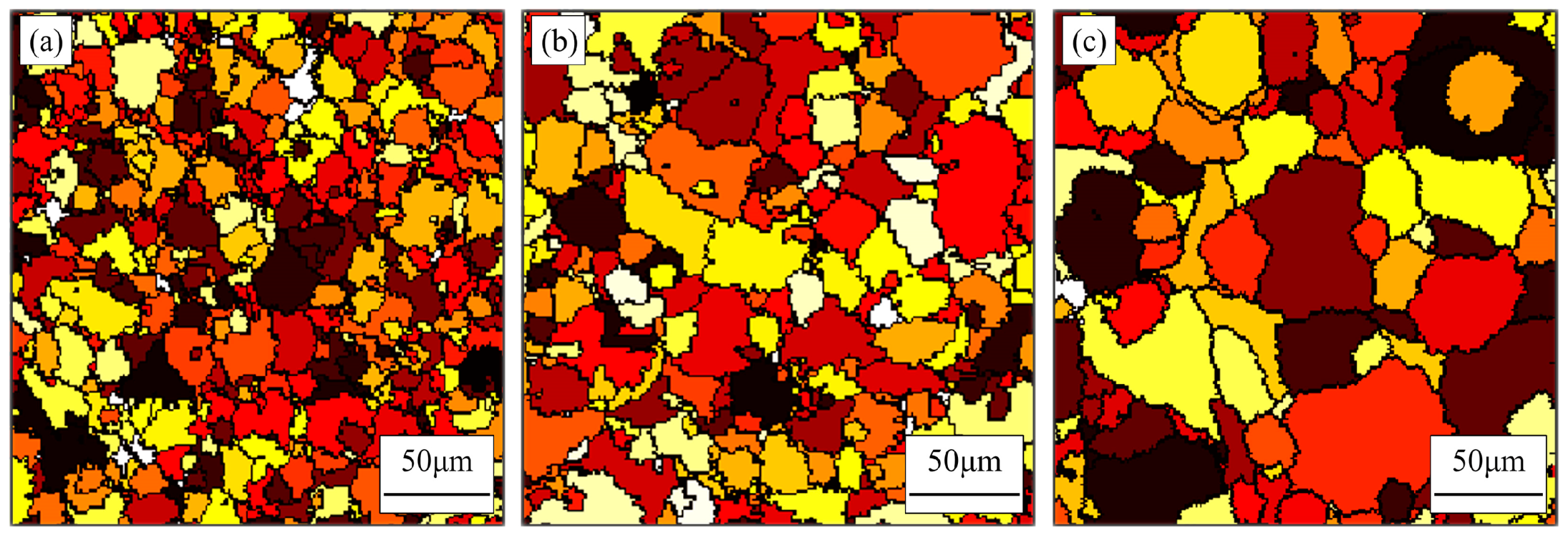
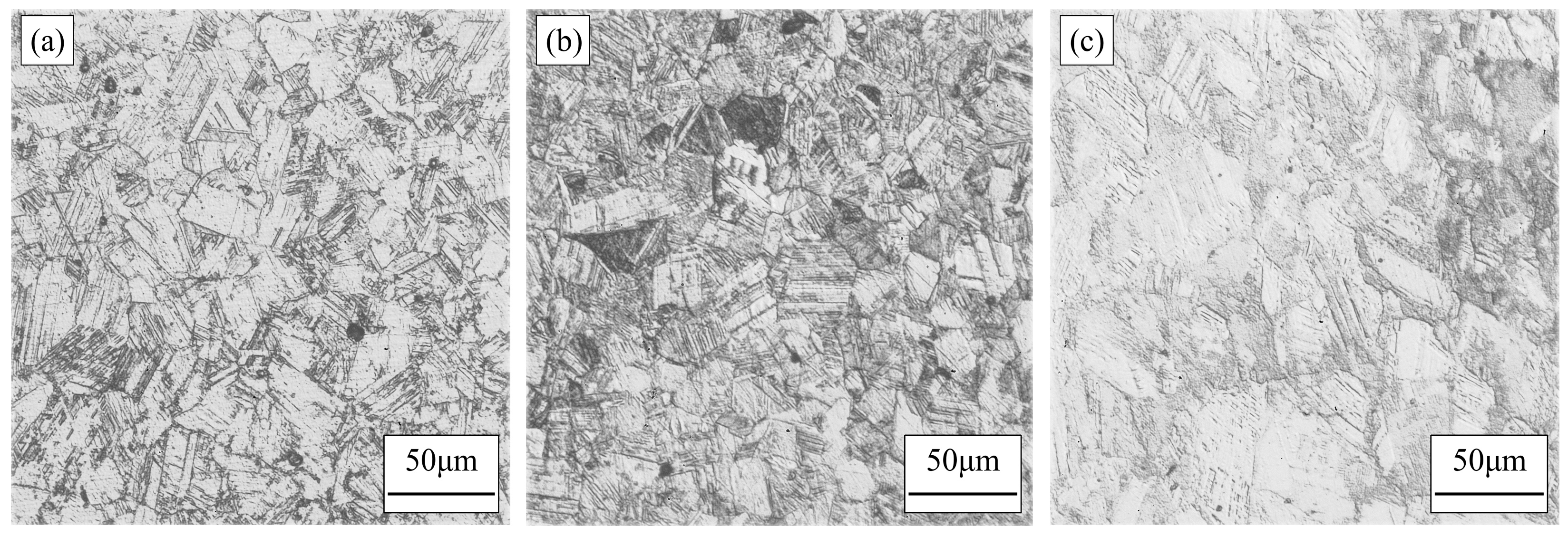
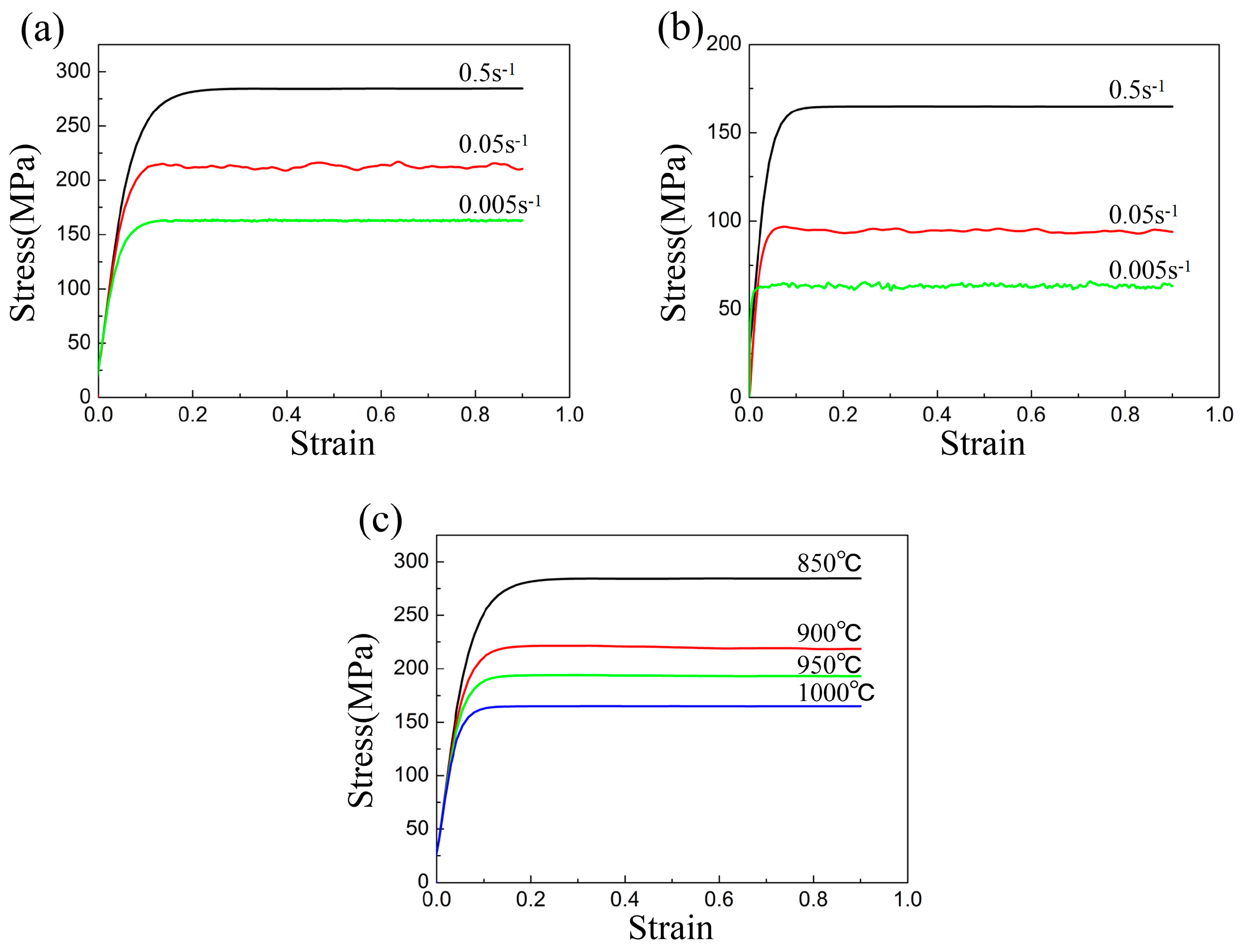
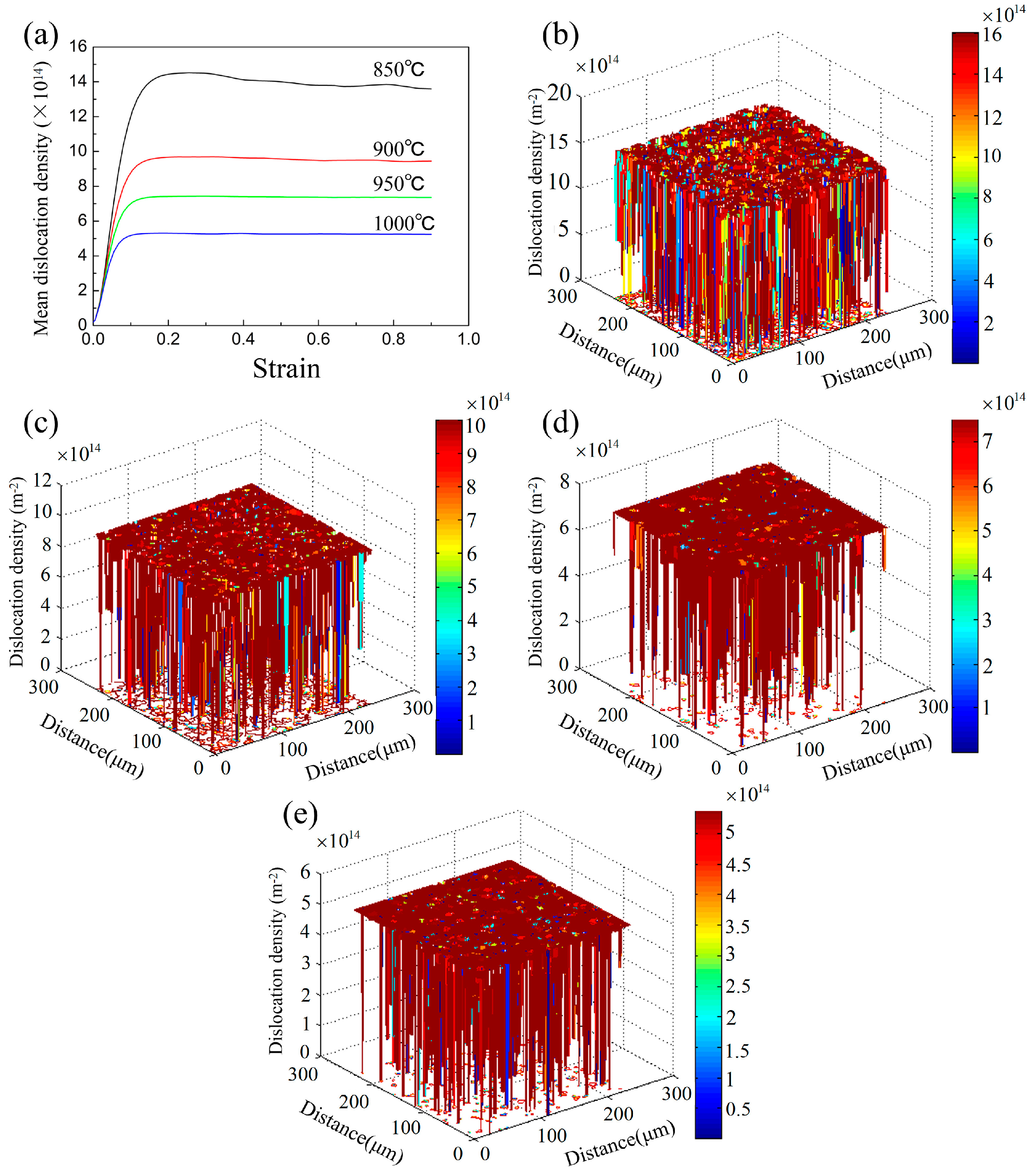
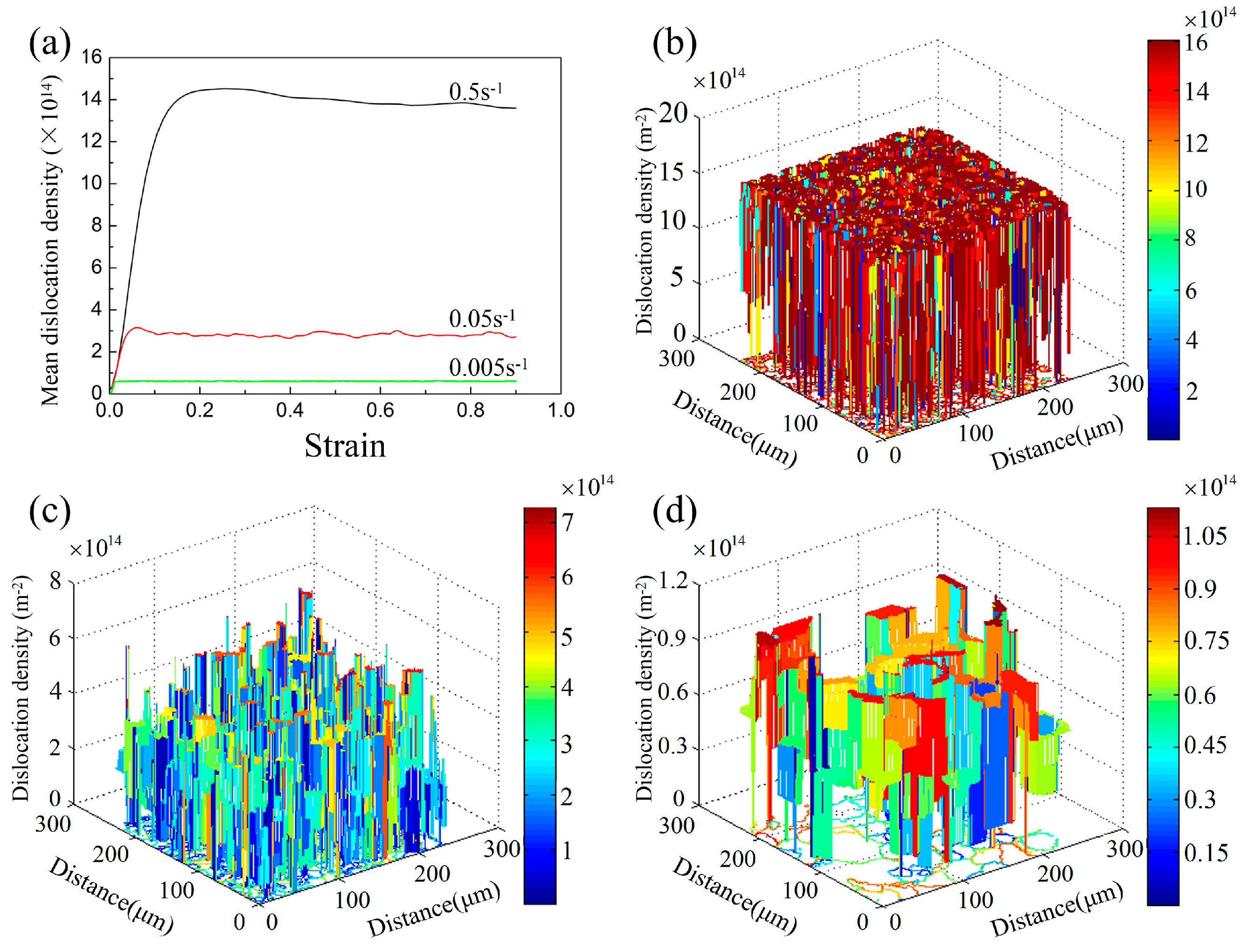
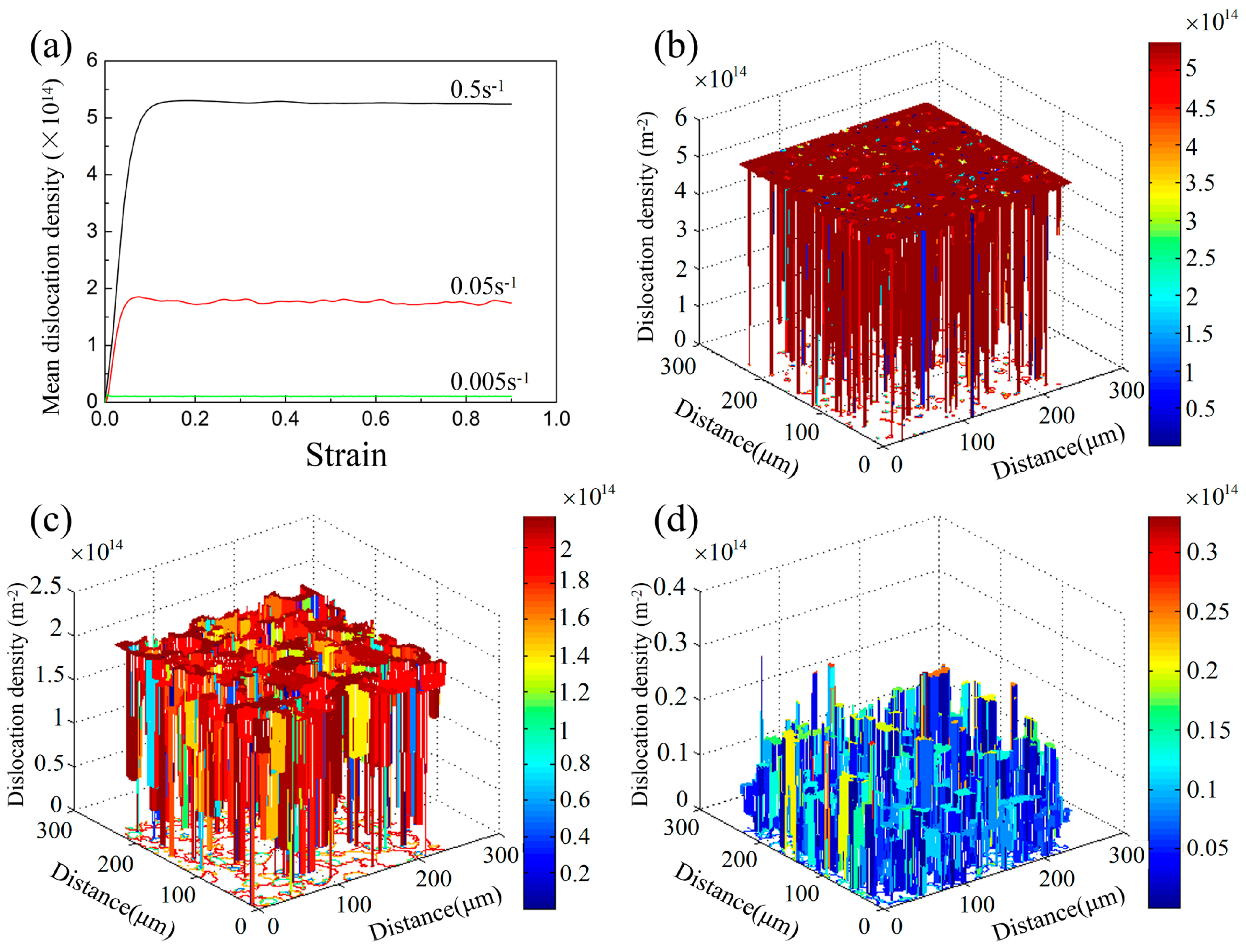
| Parameter | b (m) | G (MN·m−2) | Qact (KJ·mol−1) | Qb (KJ·mol−1) | δD0 (m3·s−1) |
|---|---|---|---|---|---|
| Value | 2.58 × 10−10 | 2.67 × 104 | 350 | 159 | 7.5 × 10−14 |
© 2019 by the authors. Licensee MDPI, Basel, Switzerland. This article is an open access article distributed under the terms and conditions of the Creative Commons Attribution (CC BY) license (http://creativecommons.org/licenses/by/4.0/).
Share and Cite
Wang, Y.; Xing, X.; Zhang, Y.; Jiang, S. Investigation of the Dynamic Recrystallization of FeMnSiCrNi Shape Memory Alloy under Hot Compression Based on Cellular Automaton. Metals 2019, 9, 469. https://doi.org/10.3390/met9040469
Wang Y, Xing X, Zhang Y, Jiang S. Investigation of the Dynamic Recrystallization of FeMnSiCrNi Shape Memory Alloy under Hot Compression Based on Cellular Automaton. Metals. 2019; 9(4):469. https://doi.org/10.3390/met9040469
Chicago/Turabian StyleWang, Yu, Xiaodong Xing, Yanqiu Zhang, and Shuyong Jiang. 2019. "Investigation of the Dynamic Recrystallization of FeMnSiCrNi Shape Memory Alloy under Hot Compression Based on Cellular Automaton" Metals 9, no. 4: 469. https://doi.org/10.3390/met9040469
APA StyleWang, Y., Xing, X., Zhang, Y., & Jiang, S. (2019). Investigation of the Dynamic Recrystallization of FeMnSiCrNi Shape Memory Alloy under Hot Compression Based on Cellular Automaton. Metals, 9(4), 469. https://doi.org/10.3390/met9040469





